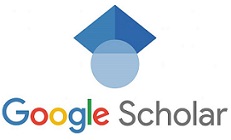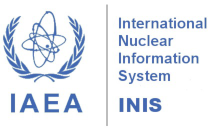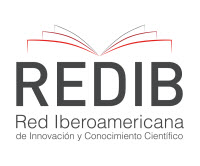Research Collaboration Dynamics at the National Nuclear Energy Commission (CNEN): Pathways to Enhance Economic and Social Impact
DOI:
https://doi.org/10.15392/2319-0612.2024.2730Keywords:
University–industry, Research Collaboration, Research production, SciVal, CNENAbstract
The growing recognition of university-industry collaborations as a strategic alternative for economic and social development at regional and national levels has fostered a continuous academic (and political) debate. Moreover, university-industry collaboration emerges as a strategic pathway for research production, particularly in developing and emerging countries. However, there is a scarcity of studies on university-industry collaboration oriented towards research production, as well as on its respective impacts, especially economic and social ones. To help fill this gap, this research examined the dynamics of research collaboration of the National Nuclear Energy Commission (CNEN), as well as its respective scientific, economic, and social impacts over the past three decades – the longest available data series, which adds originality and novelty to the research. Based on a descriptive and evaluative informetric analysis of internationally indexed publications in the Scopus (Elsevier) database, accessed through the SciVal platform, it was found that publications co-authored by CNEN with industry, government, and international actors, although less frequent, achieved greater resonance and influence in international knowledge networks, attracted more attention and interest from the international community, significantly exceeding the average expectation for similar publications, and exerted a more significant influence on patentable technologies and public policy formulation. These results may be useful for informing policies, guiding pathways to increase the prolificacy and impact of research.
Downloads
References
[1] ABRAMO, G.; D’ANGELO, C. A.; DI COSTA, F. Research collaboration and productivity: is there correlation? Higher Education, v. 7, n. 2, p. 155-171, 2009. DOI: https://doi.org/10.1007/s10734-008-9139-z
[2] BASTOS, E.C.; SENGIK, A.R.; TELLO-GAMARRA, J. Fifty years of university-industry collaboration: a global bibliometrics overview. Science and Public Policy, v. 48, n. 2, p. 177-199, 2021. DOI: https://doi.org/10.1093/scipol/scaa077
[3] BEMKE-SWITILNIK, M.; DRABEK, A.; KAMIŃSKA, A. M.; SMOLINSKI, A. Research collaboration patterns in sustainable mining—a co-authorship analysis of publications. Sustainability, v. 12, n. 11, p. 4756, 2020. doi: 10.3390/su12114756. DOI: https://doi.org/10.3390/su12114756
[4] BISHOP, K.; D’ESTE, P.; NEELY, A. Gaining from interactions with universities: Multiple methods for nurturing absorptive capacity. Research Policy, v. 40, n. 1, p. 30–40, 2011. DOI: https://doi.org/10.1016/j.respol.2010.09.009
[5] BORNMANN, L. Research excellence in Africa: a bibliometric study (version 1). Figshare, 2021. doi: 10.6084/m9.figshare.14179538.v1.
[6] CHEDID, M.; TEIXEIRA, L. The university challenge in the collaboration relationship with the industry, Handbook of Research on Modern Educational Technologies, Applications, and Management, IGI Global, pp. 449.-465, 2021. doi: 10.4018/978-1-7998-3476-2.ch027 DOI: https://doi.org/10.4018/978-1-7998-3476-2.ch027
[7] CURTY, Renata Gonçalves; DELBIANCO, Natalia Rodrigues. As diferentes metrias dos estudos métricos da informação: evolução epistemológica, inter-relações e representações. Encontros Bibli: revista eletrônica de biblioteconomia e ciência da informação, Florianópolis, v. 25, p. 1–21, 2020. Disponível em: https://doi.org/10.5007/1518-2924.2020.e74593 DOI: https://doi.org/10.5007/1518-2924.2020.e74593
[8] DANQUAH, M. M.; ONYANCHA, O. B.; AVUGLAH, B. K. Patterns and trends of university–industry research collaboration in Ghana between 2011 and 2020. Information Discovery and Delivery, v. 48, n. 2, p. 1-19, 2024. doi: 10.1108/IDD-11-2022-0122. DOI: https://doi.org/10.1108/IDD-11-2022-0122
[9] D’ESTE, P.; GUY, F.; IAMMARINO, S. Shaping the formation of university–industry research collaborations: What type of proximity does really matter? Journal of Economic Geography, v. 13, n. 4, p. 537–558, 2013. DOI: https://doi.org/10.1093/jeg/lbs010
[10] FILIPPETTI, A.; SAVONA, M. University–industry linkages and academic engagements: individual behaviours and firms’ barriers. Introduction to the special section. The Journal of Technology Transfer, v. 42, n. 4, p. 719-729, 2017. DOI: https://doi.org/10.1007/s10961-017-9576-x
[11] GARCIA, R.; ARAÚJO, V.; MASCARINI, S.; SANTOS, E.G.; COSTA, A. R. How long-term university-industry collaboration shapes the academic productivity of research groups. Innovation, v. 22, n. 1, p. 56-70, 2020. DOI: https://doi.org/10.1080/14479338.2019.1632711
[12] LEHMANN, E. E.; MENTER, M. University–industry collaboration and regional wealth. The Journal of Technology Transfer, v. 41, n. 6, p. 1284–1307, 2016. DOI: https://doi.org/10.1007/s10961-015-9445-4
[13] MWELWA, P.; JOSEPH, U.; BOULTON, G.; WAFULA, J.; MULIARO, Y.; LOUCOUBAR, C. Developing open science in Africa: barriers, solutions and opportunities. Data Science Journal, v. 19, n. 1, p. 1-17, 2020. DOI: https://doi.org/10.5334/dsj-2020-031
[14] OCDE; EUROSTAT. Oslo Manual: Guidelines for Collecting and Interpreting Innovation Data. 4. ed. Paris: OECD Publishing, 2018.
[15] ONYANCHA, O.B.; MALULEKA, J.R. Knowledge production through collaborative research in sub-Saharan Africa: how much do countries contribute to each other’s knowledge output and citation impact? Scientometrics, v. 87, n. 2, p. 315-336, 2011. DOI: https://doi.org/10.1007/s11192-010-0330-5
[16] PATTI, Carlo (Org.). O programa nuclear brasileiro: uma história oral. 1. ed. digital. Rio de Janeiro: Fundação Getulio Vargas, 2014. e-book. ISBN 978-85-60213-12-2.
[17] PONDS, R.; OORT, F. V.; FRENKEN, K. Innovation, spillovers and university–industry collaboration: An extended knowledge production function approach. Journal of Economic Geography, v. 10, n. 2, p. 231–255, 2010. DOI: https://doi.org/10.1093/jeg/lbp036
[18] PURKAYASTHA, A.; PALMARO, E.; FALK-KRZESINSKI, H. J.; BAAS, J. Comparison of two article-level, field-independent citation metrics: Field-Weighted Citation Impact (FWCI) and Relative Citation Ratio (RCR). Journal of Informetrics, v. 13, n. 2, p. 635–642, 2019. DOI: https://doi.org/10.1016/j.joi.2019.03.012. DOI: https://doi.org/10.1016/j.joi.2019.03.012
[19] RASMUSSEN, E.; WRIGHT, M. How can universities facilitate academic spin-offs? An entrepreneurial competency perspective. The Journal of Technology Transfer, v. 40, n. 5, p. 782–799, 2015. DOI: https://doi.org/10.1007/s10961-014-9386-3
[20] RONCANCIO-MARIN, J.; DENTCHEV, N.; GUERRERO, M.; DÍAZ-GONZÁLEZ, A.; CRISPEELS, T. University-industry joint undertakings with high societal impact: a micro-processes approach. Technological Forecasting and Social Change, v. 174, p. 121223, 2022. DOI: https://doi.org/10.1016/j.techfore.2021.121223
[21] SJÖÖ, K.; HELLSTRÖM, T. University–industry collaboration: A literature review and synthesis. Industrial and Higher Education, v. 33, p. 275–285, 2019. doi: 10.1177/0950422219829697. DOI: https://doi.org/10.1177/0950422219829697
[22] SKUTE, I.; ZALEWSKA-KUREK, K.; HATAK, I.; DE WEERD-NEDERHOF, P. Mapping the field: a bibliometric analysis of the literature on university–industry collaborations. The Journal of Technology Transfer, v. 44, n. 3, p. 916-947, 2019. DOI: https://doi.org/10.1007/s10961-017-9637-1
Downloads
Published
Issue
Section
License
Copyright (c) 2025 ALESSANDRO A. JORDÃO, Valter Arthur

This work is licensed under a Creative Commons Attribution 4.0 International License.
Licensing: The BJRS articles are licensed under a Creative Commons Attribution 4.0 International License, which permits use, sharing, adaptation, distribution and reproduction in any medium or format, as long as you give appropriate credit to the original author(s) and the source, provide a link to the Creative Commons license, and indicate if changes were made. The images or other third party material in this article are included in the article’s Creative Commons license, unless indicated otherwise in a credit line to the material. If material is not included in the article’s Creative Commons license and your intended use is not permitted by statutory regulation or exceeds the permitted use, you will need to obtain permission directly from the copyright holder. To view a copy of this license, visit http://creativecommons.org/licenses/by/4.0/






















